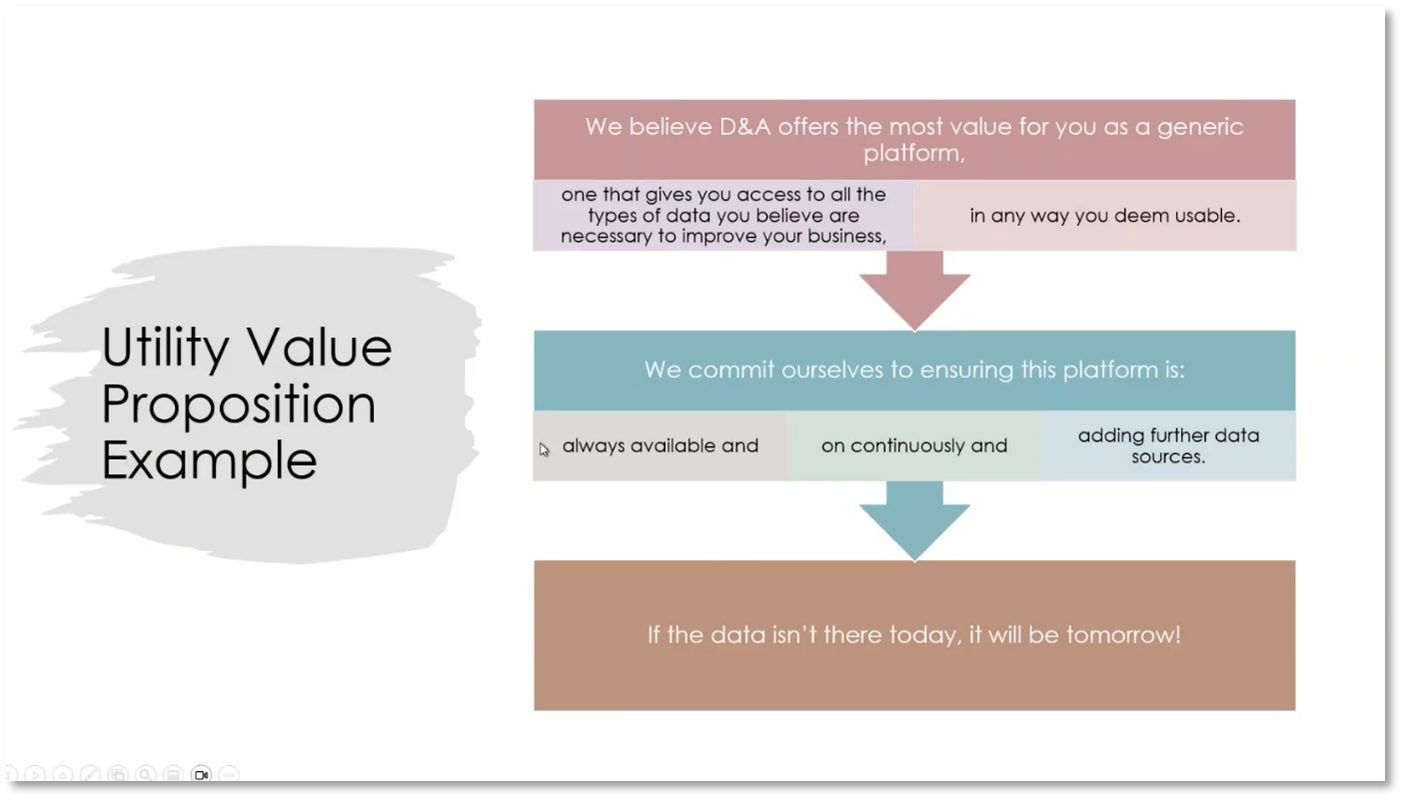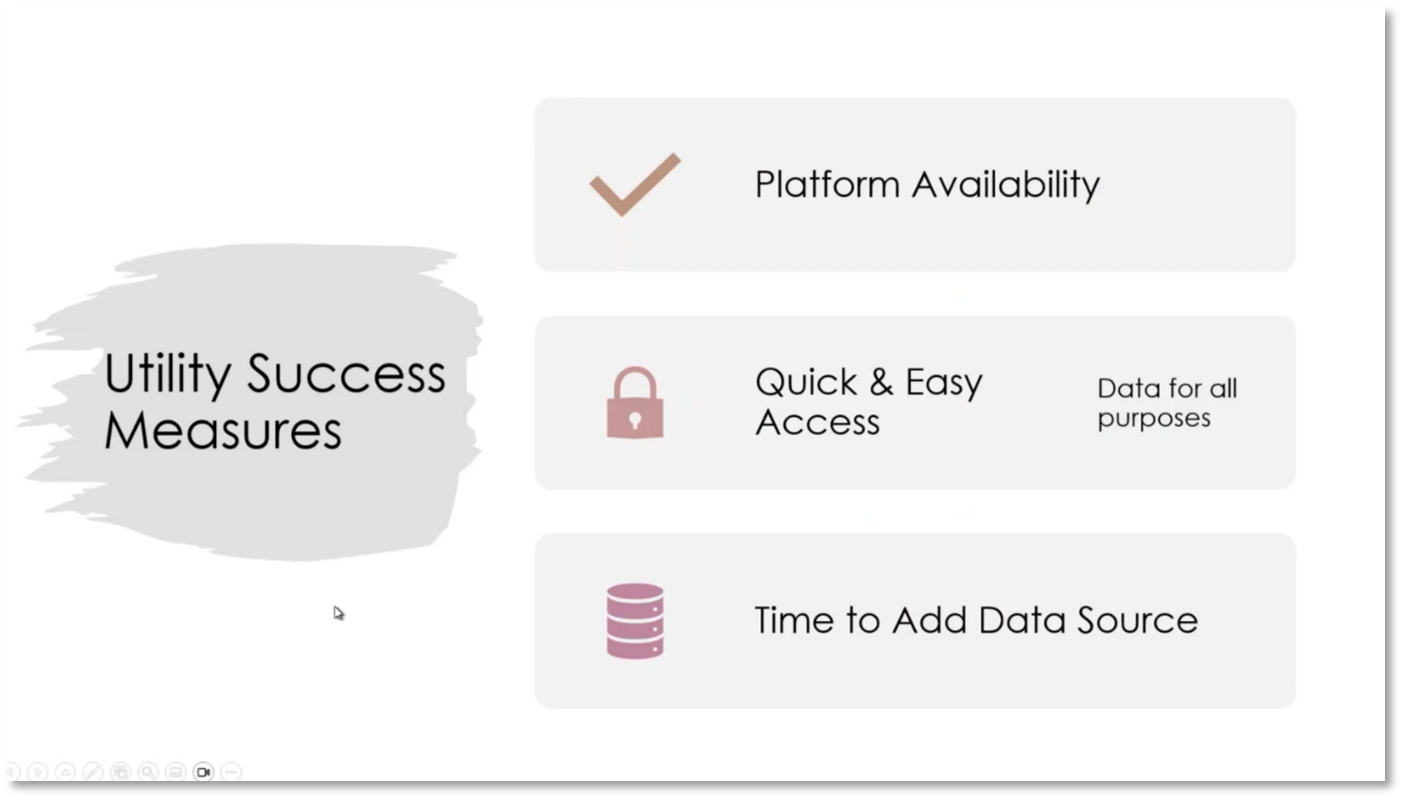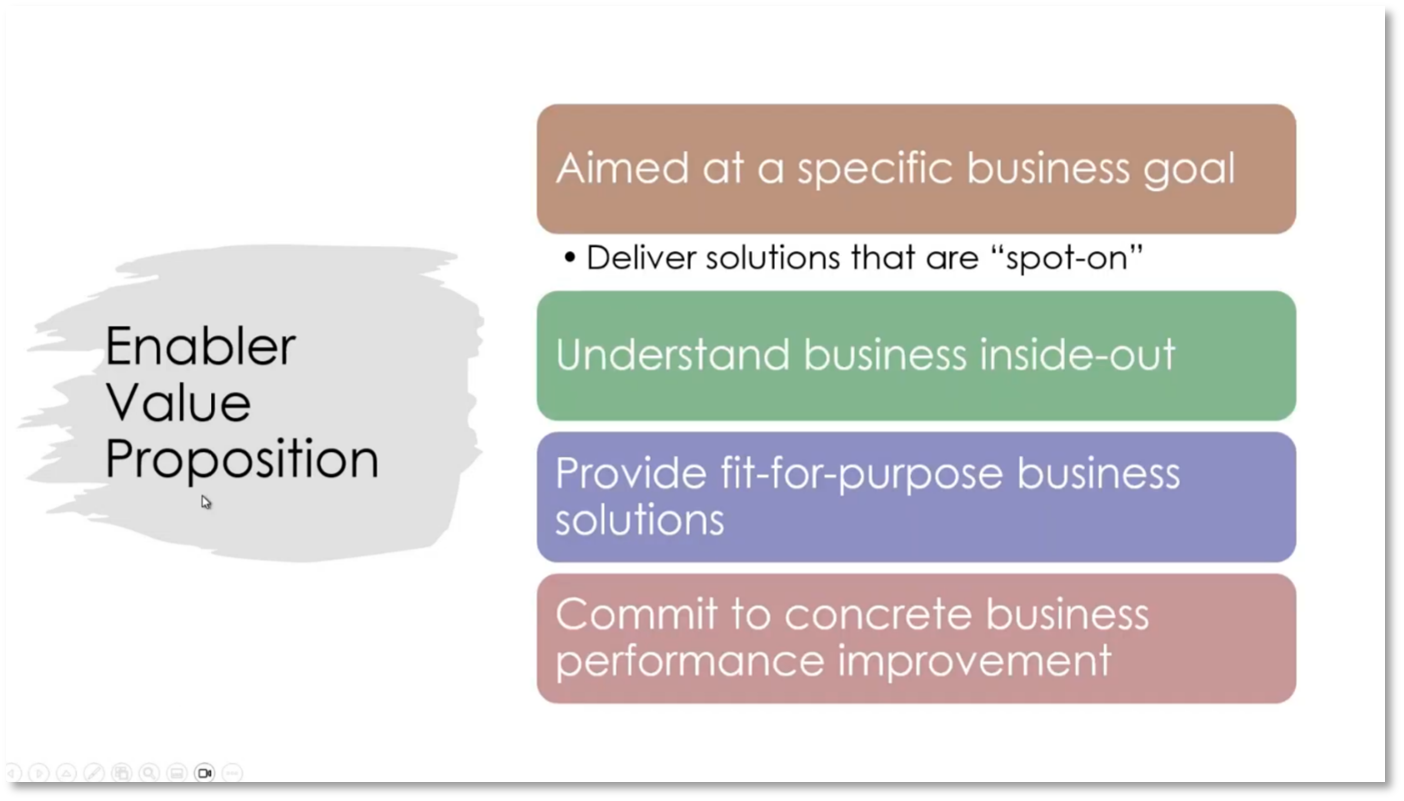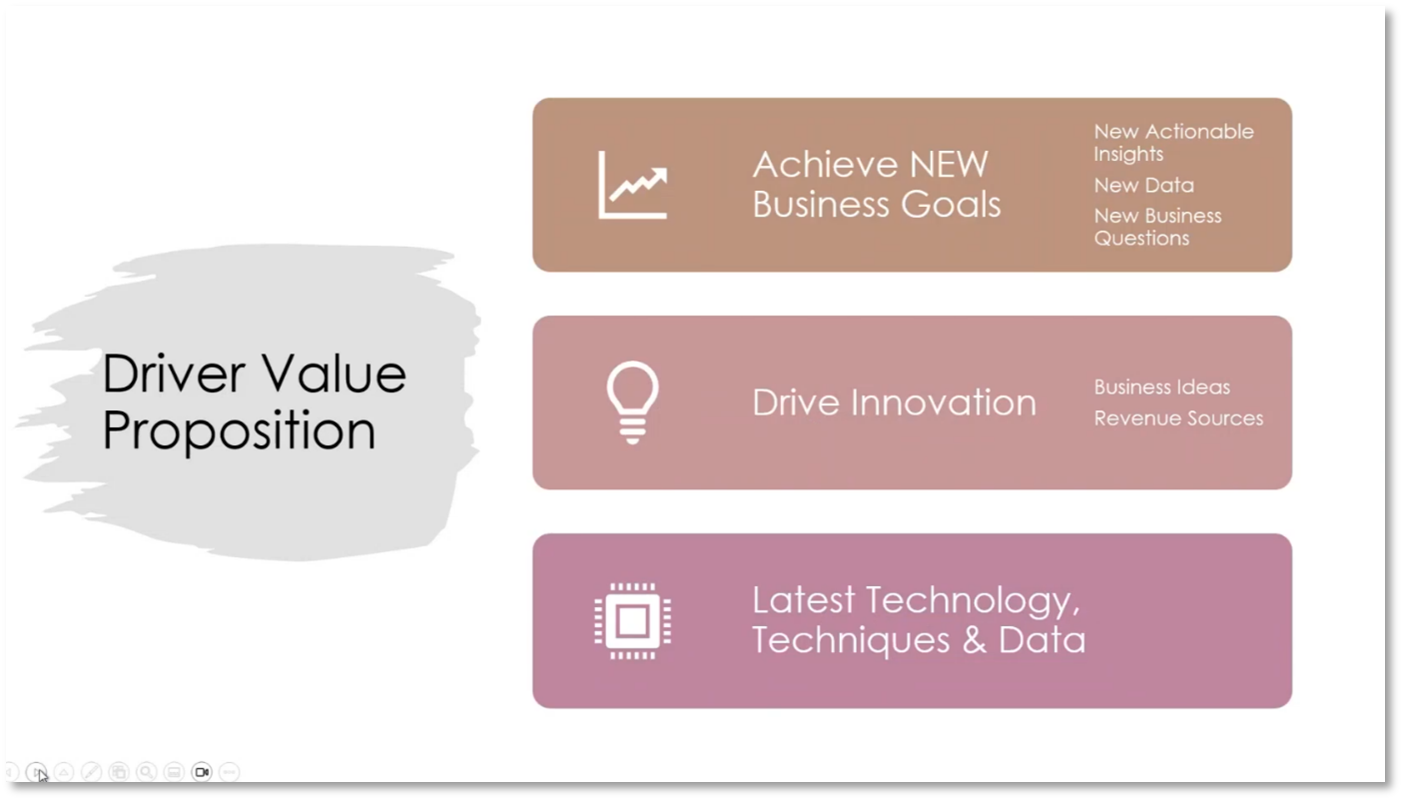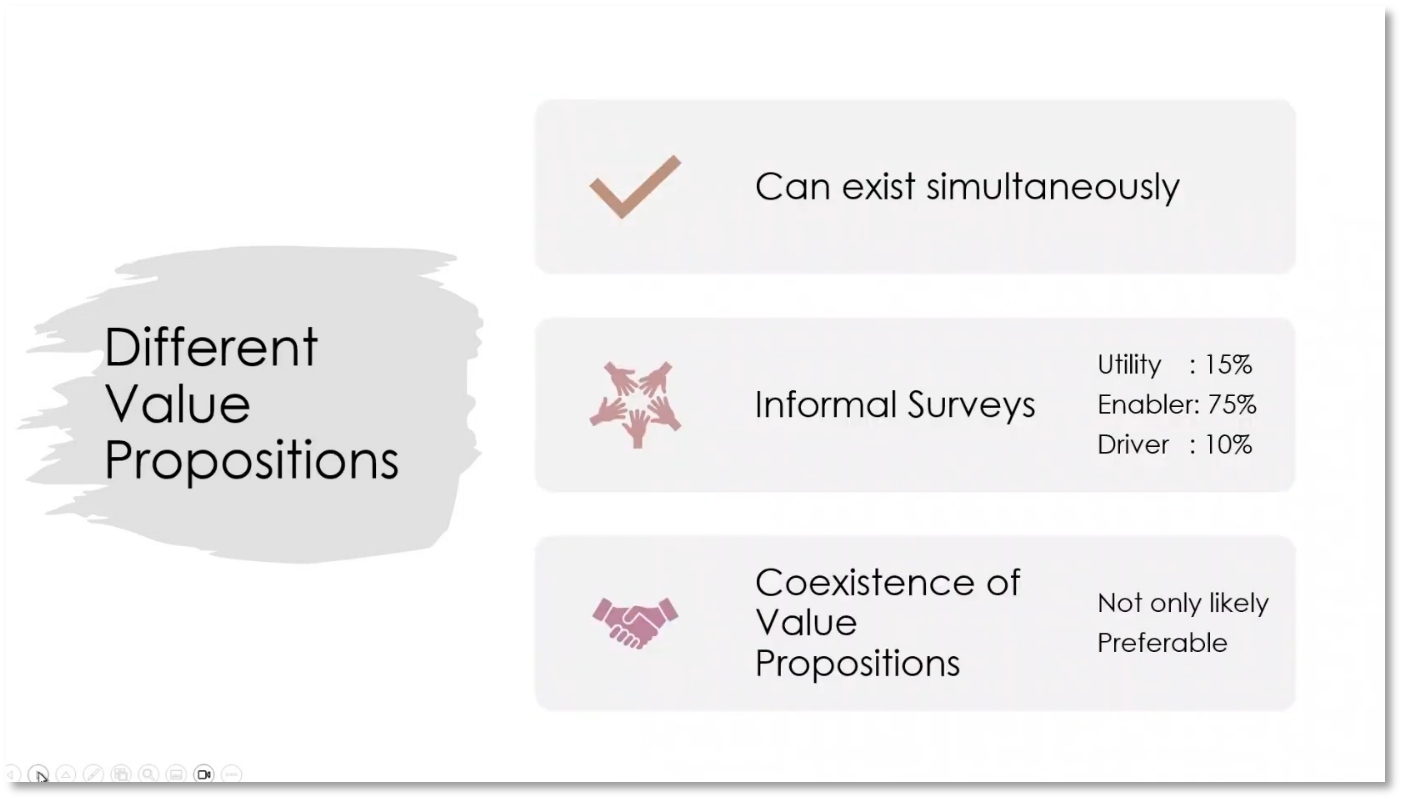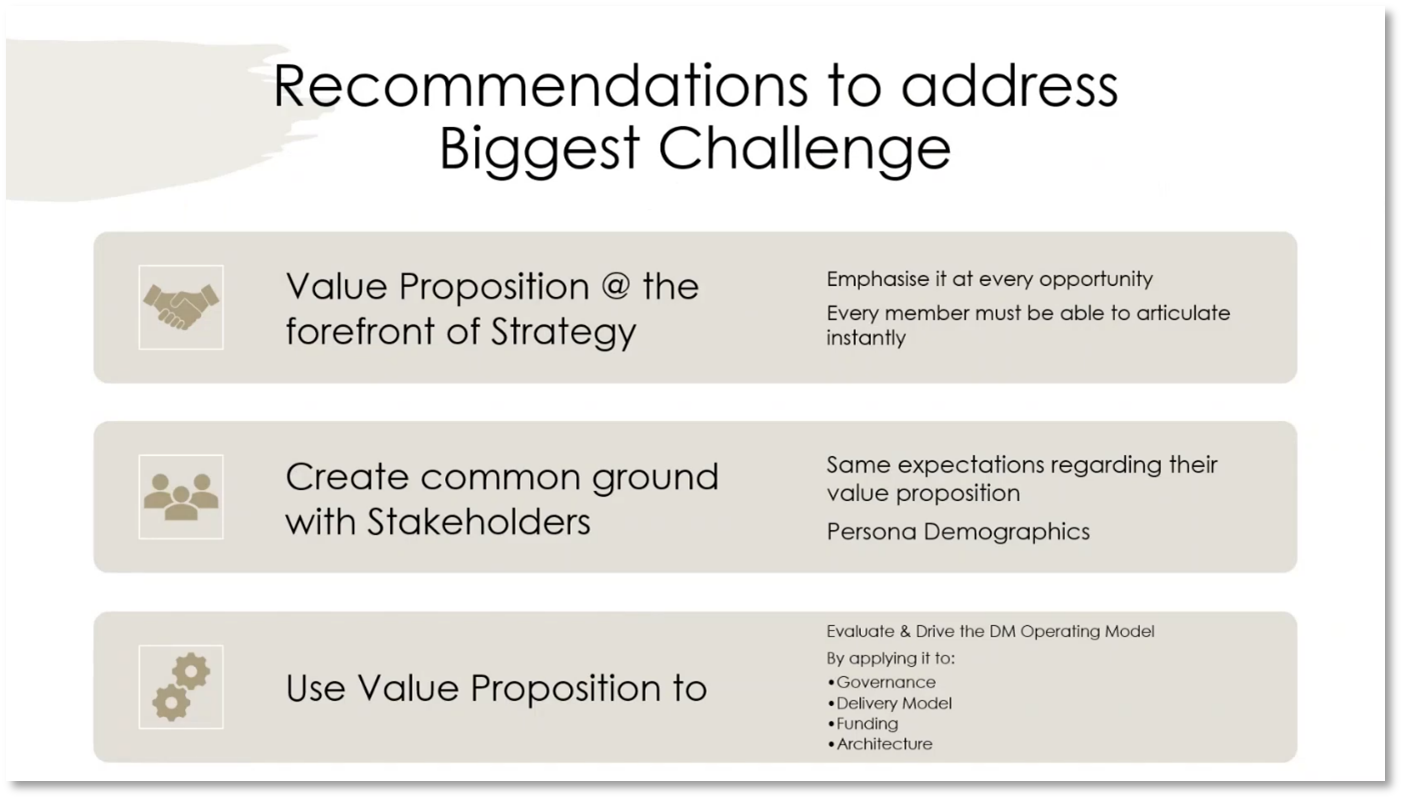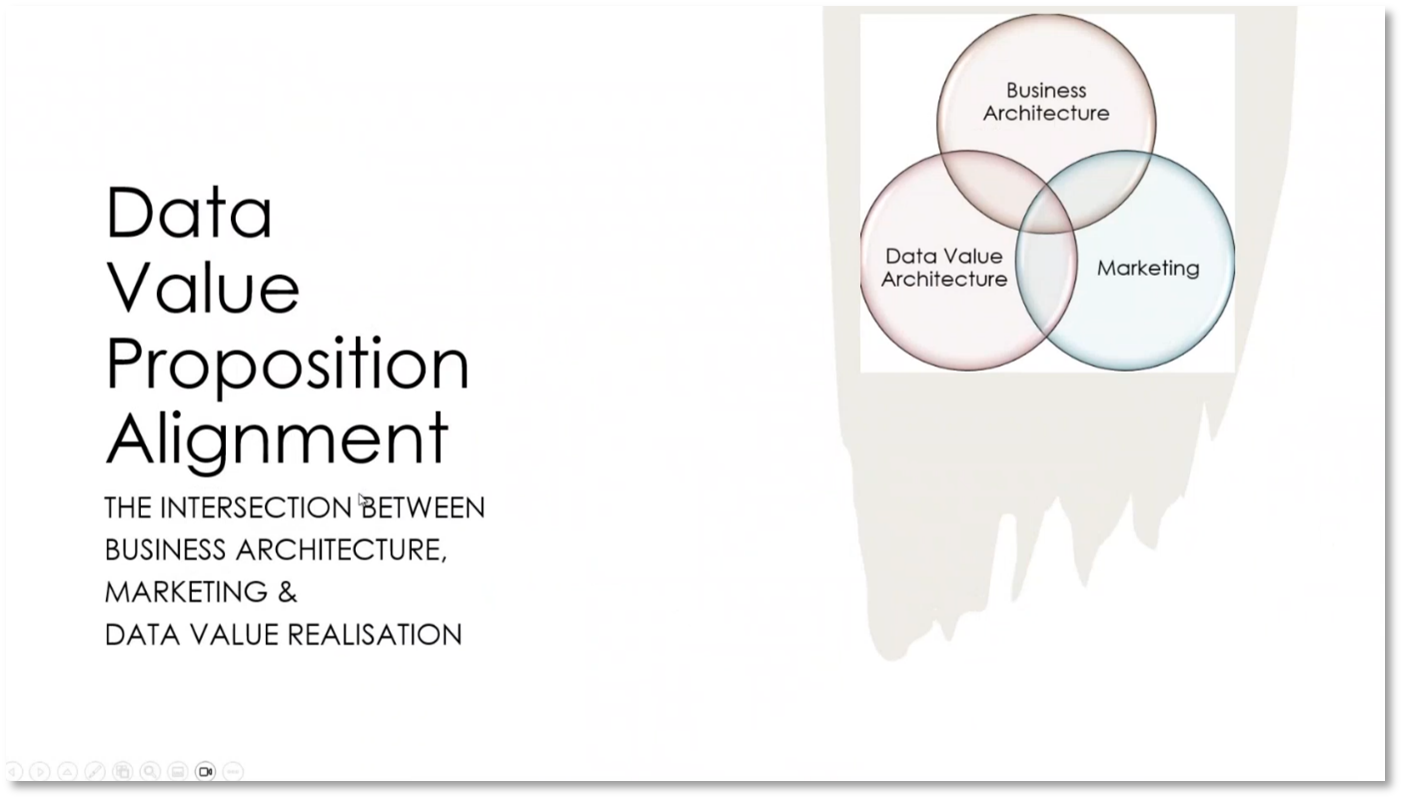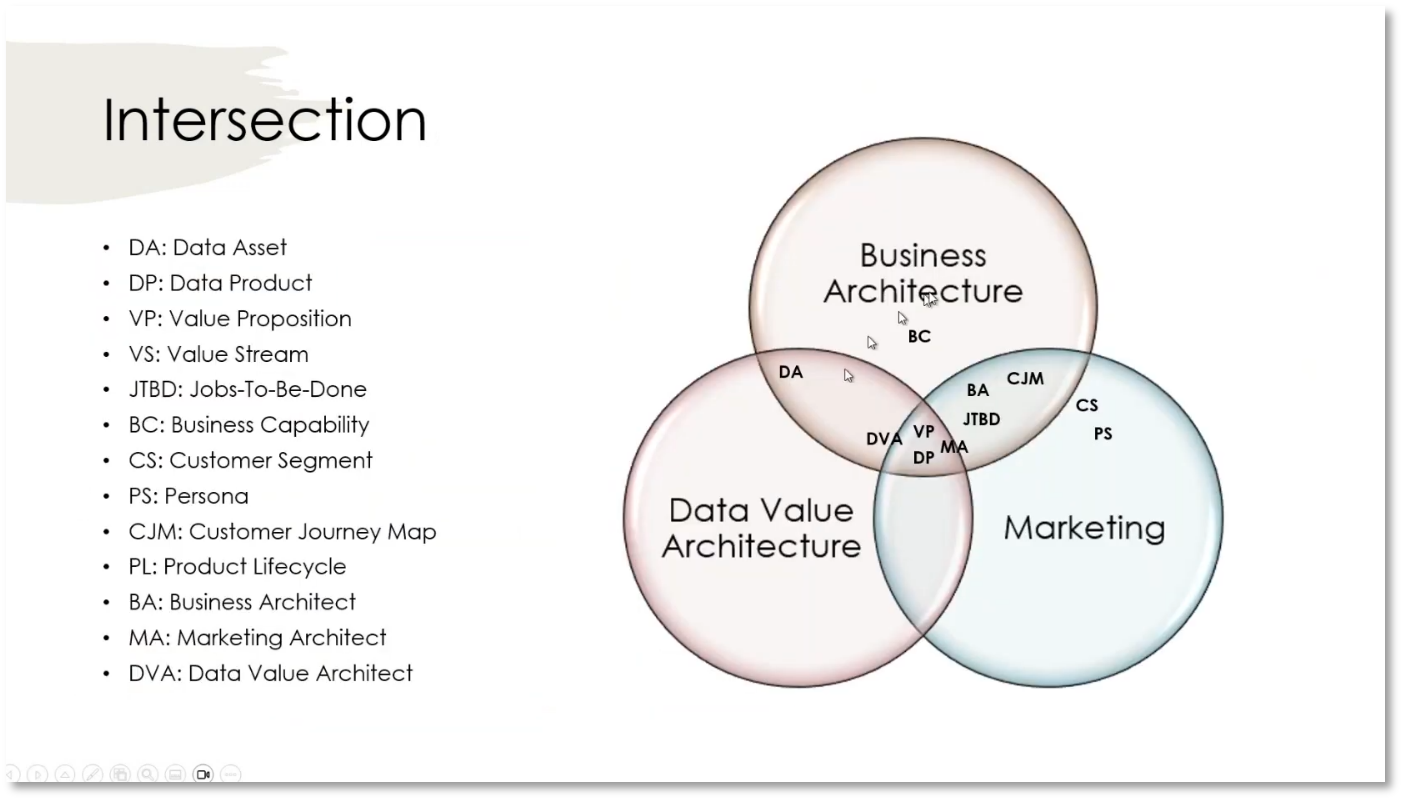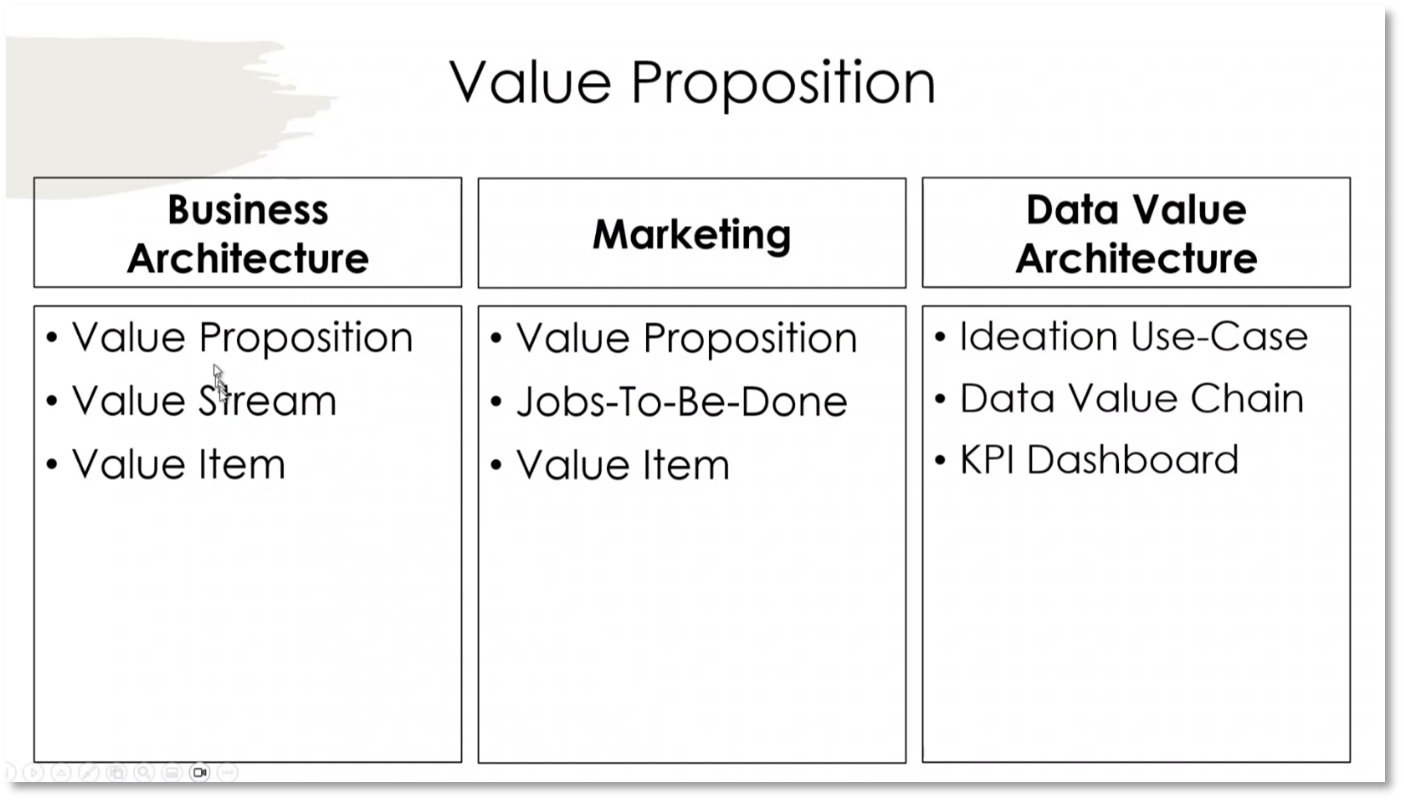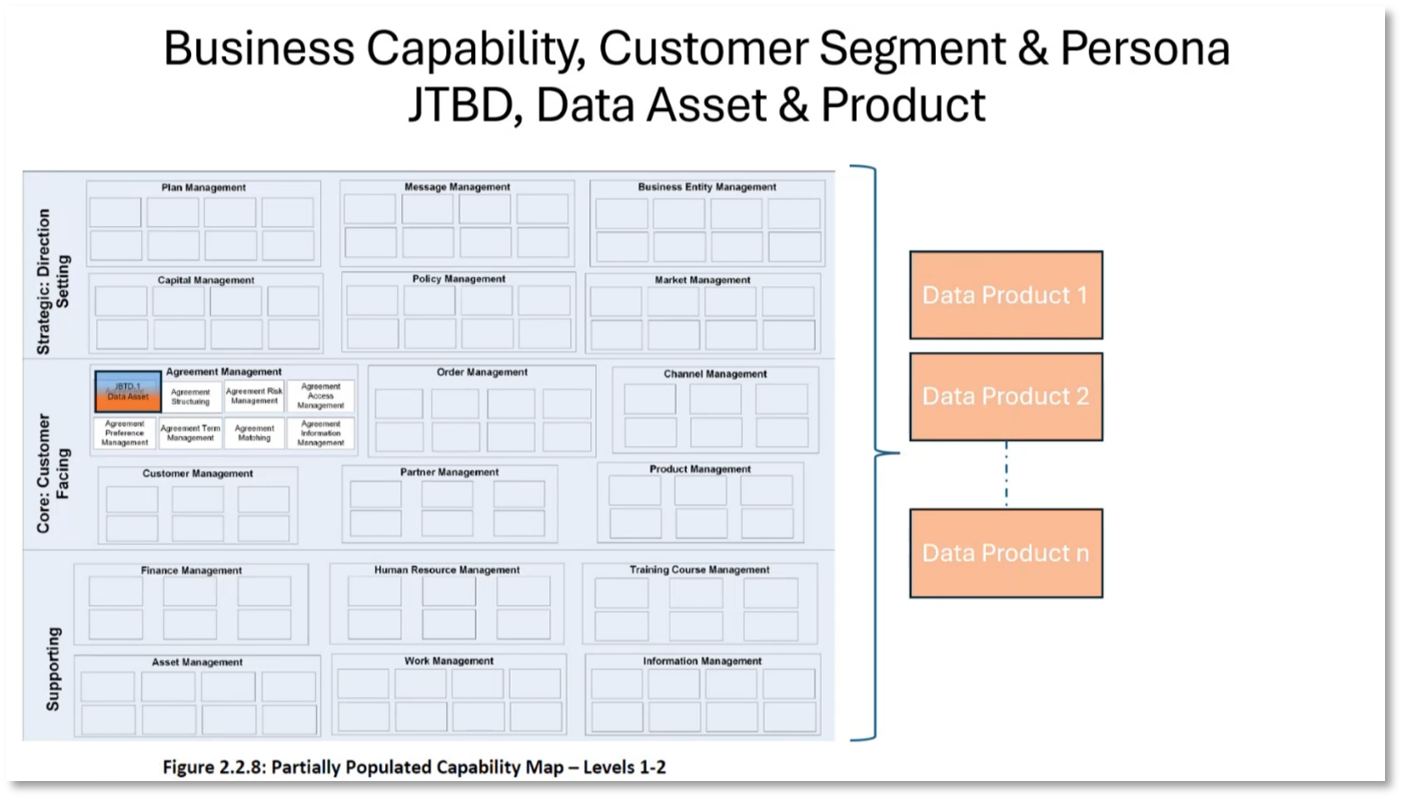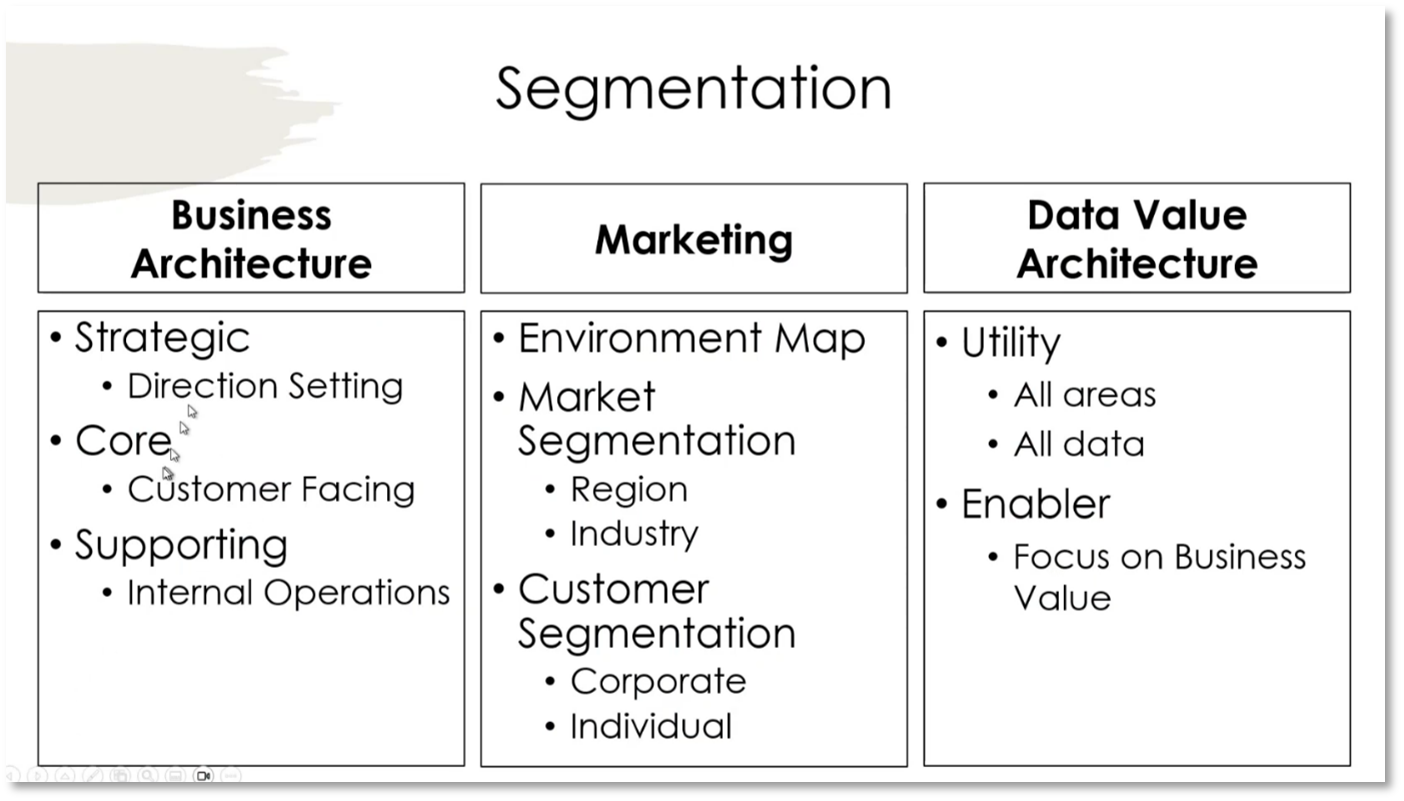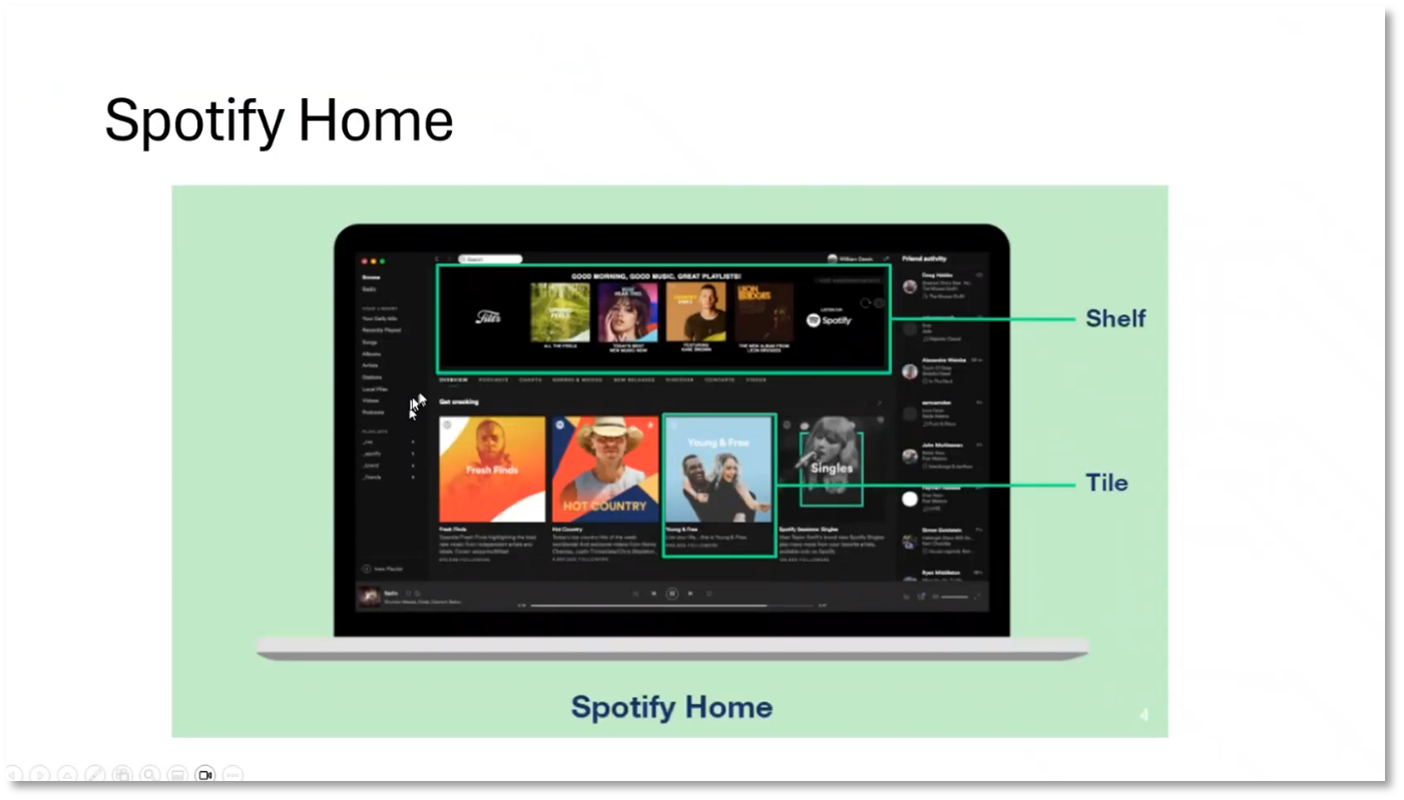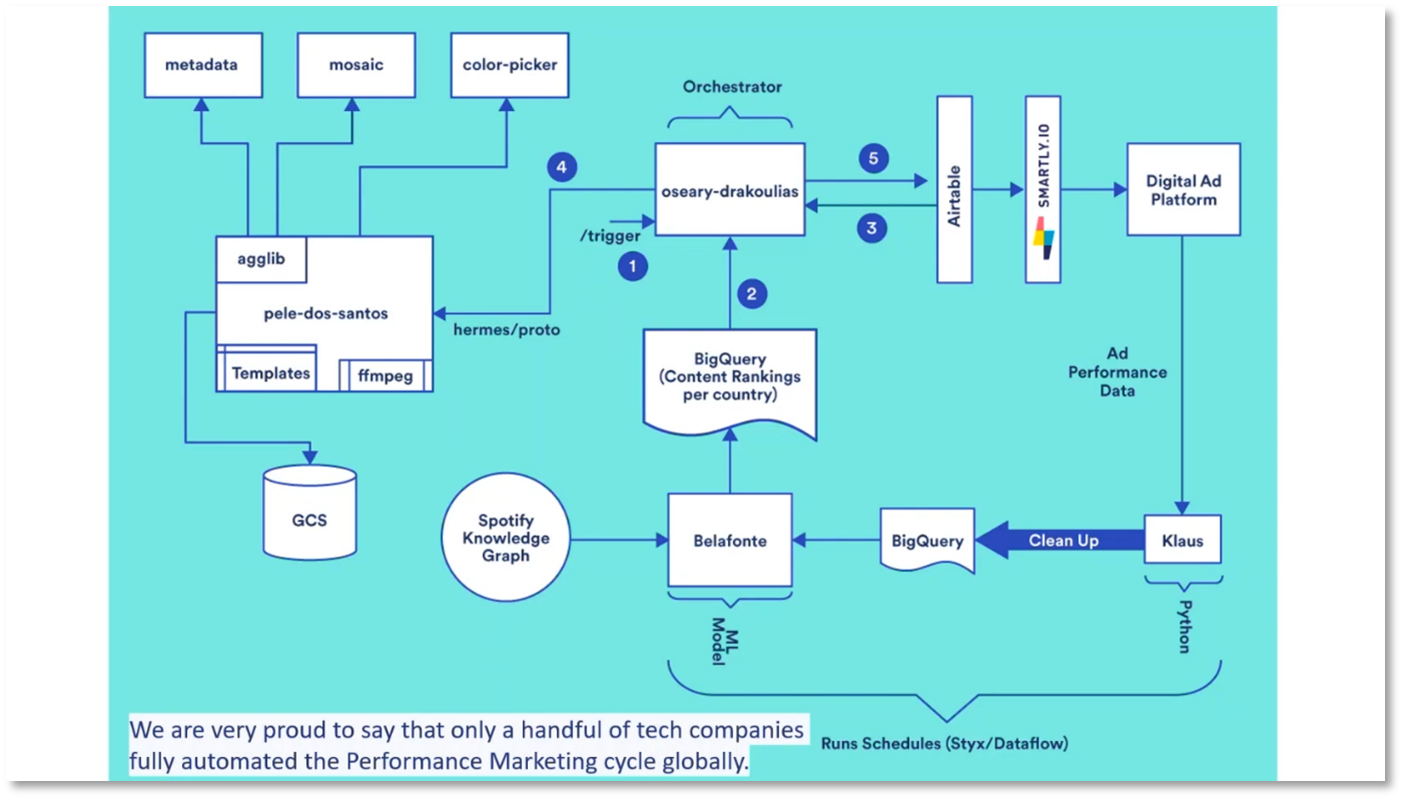Designing Data Products to Support Customer Value Proposition - Data Executives
Executive Summary
‘Designing Data Products to Support Customer Value Proposition’ presents a comprehensive list of topics and discussion related to the data value proposition, collaborative learning, business architecture, marketing, and technology. Topics also include understanding and implementing value propositions, data-driven analytics platforms, communication strategies, and the impact of AI on user engagement in music streaming platforms. Howard Diesel presents an analysis of companies like Netflix and Spotify, as well as offering insights into the future of AI in data production.
Webinar Details:
Title: Designing Data Products to Support Customer Value Proposition - Data Executives
Date: 02 August 2024
Presenter: Howard Diesel
Meetup Group: Data Executives
Write-up Author: Howard Diesel
Contents
Executive Summary.
Webinar Details
Concepts and Their Definitions in Collaborative Learning.
Building a Data Value Proposition: A Discussion on Strategy and Implementation.
Value Propositions of Data and Analytics: A Perspective from Gartner
Value Proposition and Delivery of a Data-Driven Analytics Platform.
Understanding and Implementing Business Solutions with Data.
Value Propositions and Data-Driven Customer Journey Enhancement
Understanding and Implementing a Data Value Proposition.
Challenges and Importance of Value Proposition in Business.
Understanding and Quantification of Data Product Value.
Understanding Commercial Value and Risk Mitigation.
Building Common Ground with Stakeholders and Communicating Value Proposition.
Discovery Mechanisms and Value Proposition Validation in Business.
The Importance and Strategy of Communication in Business.
Aligning Business Architecture, Marketing, and Data Value Architect
Understanding the Concept of Value Proposition in Business Architecture and Marketing.
Understanding the Value Stream and Data Value Chain in Business.
Understanding Business Architecture and Its Importance in Strategy and Marketing.
Data Value Architecture and Customer Journey in Business.
Understanding the Role of Data in Business and Marketing.
Comparative Analysis of Netflix and Spotify Engineering.
The Automation and Personalization of Netflix's Marketing Strategy.
The Impact of AI on User Engagement and Market Share in Music Streaming Platforms.
Robert Abate Information Triangle and Analytics in Technology.
Future of AI in Data Production and Preparation for Examinations.
Concepts and Their Definitions in Collaborative Learning
Howard Diesel opens the webinar opens with talk about the challenges faced in defining concepts for conceptual modelling. A writing business definitions course by Mark Atkins and Terry Smith is suggested for the dilemma. Howard shares that Modelware Systems is currently collaborating with Mark and Terry. The focus is on conceptual models and to develop a course, emphasising concepts, terms, and definitions. Additionally, Howard shares another resource, Maria's Keets book, ‘The What and How of Modelling Information and Knowledge: From Mind Maps to Ontologies,’ which covers everything from mind mapping of concepts to ontologies, offering a broad scope of concept modelling approaches.
Building a Data Value Proposition: A Discussion on Strategy and Implementation
In this final session of ‘Designing Data Products to Support Customer Value Proposition,’ Howard wants to cover the importance of building a data value proposition for the organisation, particularly from the perspective of the data executive. Also, clearly articulating the value proposition in a data and analytics strategy, as highlighted by Gartner. Furthermore, this explores how engaging stakeholders and ensuring their buy-in through effective communication of the value proposition is crucial for the success of the data strategy. The elements of a data and analytic strategy include vision, stakeholder outcomes, capabilities and deficits, and the operating delivery model.
Figure 1 Designing Data Products: Data Citizen, Data Professional and the Data Manager
Figure 2 Building a Data Value Proposition for the Organisation
Value Propositions of Data and Analytics: A Perspective from Gartner
In Gartner’s paper on data and analytics strategy, three key value propositions for data and analytics are outlined. First, data analytics should be readily available for all purposes, such as utility, emphasising its utility value proposition. Second, data and analytics are meant to enable businesses to make informed decisions daily, highlighting their value proposition linked to outcomes. Third, data and analytics should be employed to drive innovation and business growth, emphasising their role in uncovering opportunities that would otherwise go unseen.
Figure 3 Three Types of Value Proposition for D&A
Value Proposition and Delivery of a Data-Driven Analytics Platform
The value proposition is centred around data and analytics as a utility, offering quick and easy access to a wide range of data sources with a commitment to continuous enhancement. Success is measured by platform availability, data accessibility, and the efficiency of adding new data sources. Additionally, ‘the enabler value proposition’ focuses on delivering tailored solutions to meet specific business unit needs, acknowledging the challenges of transitioning from limited data management to comprehensive data accessibility. The emphasis is on orchestrating rapid data loading into the cloud environment and aligning solutions with business requirements to deliver value.
Figure 4 Utility Value Proposition Example
Figure 5 Utility Success Measures
Figure 6 Enabler Value Proposition
Understanding and Implementing Business Solutions with Data
Howard goes on to address the challenges faced in agile and innovation hubs, highlighting the need for guidance regarding the business’s desired outcomes. He explores various discovery exercises and their impact measurement, as well as the coexistence of different approaches and the use of data to enhance customer journeys. An example of data management in an innovation hub is shared. A large amount of financial data was collected, leading to valuable insights and raising concerns about privacy and potential misuse. Ultimately, properly framing data collection to facilitate discoveries for improving customer segments and experiences is imperative. Additionally, Howard suggests follow-ups and feedback loops to assess the benefits and progress of implemented strategies.
Figure 7 Enabler Success Measures
Figure 8 Driver Value Proposition
Figure 9 Driver Success Measures
Value Propositions and Data-Driven Customer Journey Enhancement
Utility, enablement, and driving emphasise that these value propositions can coexist and that it's essential to understand the business's preference in this regard. An example of leveraging data for customer journey enhancement through discovery exercises is shared. Howard uses this to explore the use of data in innovation and the challenges faced while analysing a large volume of data. The importance of discovery exercises in understanding customer segments and personas is also highlighted. Howard shares that Gartner's reference to the three types of value propositions stresses the need to adapt and personalise them while using them as a framework for positioning and creating measurements.
Figure 10 Different Value Propositions
Understanding and Implementing a Data Value Proposition
The data value proposition emphasises the importance of delivering tangible business value rather than merely being a cost centre. Howard highlights communication, acknowledgement, and accounting for the value delivered. Delving into the challenges related to getting the value proposition acknowledged and accounted for, Howard suggests tracking projected returns on investment and expressing value in economic terms.
Figure 11 What is a Data Value Proposition
Challenges and Importance of Value Proposition in Business
The value proposition for the organisation faces two significant challenges. Firstly, there is the need to define and agree upon the value proposition while ensuring no implicit stakeholder interpretations exist. Secondly, there is the complexity of addressing the diverse needs, pains, and gains of approximately 60 to 70 organisational stakeholders. To overcome these challenges, it is crucial to quantify and express the delivered value, aligning it with the organisation's strategy and ensuring that all members can effectively communicate the value proposition. This is essential in a business landscape where rapid transformation and AI advancements have heightened expectations, requiring a clear and defined demonstration of value to mitigate unrealistic interpretations and deliver tangible benefits.
Figure 12 Recommendations to Address Biggest Challenge
Understanding and Quantification of Data Product Value
When quantifying the value of a data product, the key concept is the data ROI (return on investment). To assess the value, one would start by understanding the stakeholder's current costs and any potential revenue or risk involved. By describing the value statement and applying a commercial valuation through an ROI calculation, the goal is to clearly understand the benefits to the stakeholder, particularly in terms of cost reduction. This process aligns with the approach taken by the Enterprise Data Management (EDM) Council and involves a thorough economic evaluation to ensure the delivery of quantifiable value.
Understanding Commercial Value and Risk Mitigation
Understanding the commercial value is crucial as it encompasses revenue generation, cost reduction through automation, risk mitigation, and business process optimisation. In the context of risk mitigation, Howard mentions that a hypothetical bank facing a potential penalty of $20 million could significantly reduce it to $1 million through necessary work, resulting in savings of $19 million. Detailed financial information is available in a webinar, which can be shared upon request for a more comprehensive understanding.
Building Common Ground with Stakeholders and Communicating Value Proposition
To create a common ground with stakeholders, it's essential to understand their expectations and ensure that they align with requirements. Identifying persona demographics for the 60 stakeholders is crucial, as it involves understanding their roles and responsibilities, which can be facilitated through business architecture. Using a value proposition is integral for evaluating and driving the data management operating model, which requires considerations for governance, delivery models, funding, and architectural needs. Communicating the value proposition to the numerous stakeholders necessitates a playbook and a specialised technique to effectively convey the message.
Figure 13 Communication your Value Proposition
Discovery Mechanisms and Value Proposition Validation in Business
The discovery process involves defining the jobs and portfolios within an organisation, identifying pains and gains associated with these roles, and validating the value proposition through customer interviews, surveys, data collection, and A/B testing. Howard mentions creating mock web pages as an example to observe executive clicks to validate pain points and confirm value delivery. This approach allows for manual validation before full product development and can be used to identify the most pressing customer needs. Additionally, the "Click to discuss" technique is suggested, which involves confirming customer pain points through analytics and providing a direct call-to-action for further discussion. The process also includes engaging early evangelists and implementing pilot programs to gather feedback and verify the proposed value.
Figure 14 Define your Value Proposition for Validation
Figure 15 Validate your Value Proposition
The Importance and Strategy of Communication in Business
When communicating with different business stakeholders, it's essential to tailor your message according to their specific needs. This means understanding each segment and addressing their requirements individually. Crafting a message based on the recipient's persona and highlighting a unique selling point is crucial. By focusing on an ideal client profile and a strong value proposition, consistent messaging, storytelling, and feedback can be utilised to optimise the communication strategy. This approach is vital for effectively reaching high-value prospects and addressing their most important needs.
Figure 16 Communicate your Value Proposition
Aligning Business Architecture, Marketing, and Data Value Architect
A new concept, the data value architect, aligned with business architecture and the marketing department, is mentioned. The existence of a similar term, the value architect, emphasises the focus on commercial value and feasibility studies. Howard highlights common elements among data architecture, data value architecture, business architecture, and marketing, including value proposition, jobs to be done, segmentation, personas, and product life cycle. He also maps overlaps between the different areas, illustrating how data assets and products fit into the overall alignment strategy.
Figure 17 Data Value Proposition Alignment
Figure 18 Integration / Integration Areas
Figure 19 Intersection
Understanding the Concept of Value Proposition in Business Architecture and Marketing
Howard mentions the concepts of value proposition in different business domains, specifically business architecture, marketing, and data value architecture. Different terms, such as jobs to be done, value streams, and value items, are used to describe value creation. Touching on aggregating value items to form a value proposition, Howard discusses how the data value architect works from an ideation use case, a data value chain, and a Key Performance Results (KPR). The need to align the jobs to be done with the stages of the value stream is imperative, along with the agreement that they all address the creation of value in different ways.
Figure 20 Value Proposition
Understanding the Value Stream and Data Value Chain in Business
The importance of business architecture and its role in strategy and marketing is evident through its intricate capabilities and segmentation functions. The architecture involves levels of capabilities, data assets, and the utility approach for delivering value streams. Segmentation in business architecture encompasses strategic core and supporting elements, particularly in customer-focused areas like customer management, order management, and product management, which are vital for marketing targeting. Additionally, data value architecture is crucial in understanding customer journeys by mapping customer journey maps and service blueprints, transitioning from a seller-defined approach to a customer-centric, individualised value proposition strategy. Spotify's positioning in this realm highlights the challenges and complexities associated with persona-based targeting and individualised value propositions.
Figure 21 Value Stream / Capabilities
Figure 22 Value Stream / Capabilities: Jobs To Be Done
Understanding Business Architecture and Its Importance in Strategy and Marketing
The business architecture involves a complex web of capabilities that are decomposed into various levels. There is a utility approach that requires data assets for each capability. There was a mention of approximately 1000 different breakdowns to level 2 capability in the healthcare sector. The segmentation involves strategic core and supporting areas, focusing on customer, order, partner, product, and channel management. Marketing segmentation by region, industry, and customer type is also highlighted to deliver the right messaging. Effective communication with stakeholders is also emphasized, and the data value architecture operates within this framework. This segmentation strategy aligns with the business architecture, and marketing and data integration is crucial.
Figure 23 Partially Populated Capability Map - Levels 1-2
Figure 24 Segmentation
Data Value Architecture and Customer Journey in Business
The evolution of businesses from seller-driven to AI-driven models is mentioned, emphasising the importance of customer-centricity and individualisation in recommendations. Delving into real-world examples such as Netflix, Spotify, Amazon, and Google Maps showcases how personalised recommendations and data analytics drive their services. The comparison between Netflix and Spotify's engineering platforms is also highlighted, underscoring the significance of data-driven decision-making and user preferences in business strategies.
Figure 25 Example of Stratifies, Level 1 Capability Map
Figure 26 Example of Stratifies, Level 1 Capability Map with Marketing Involvement
Figure 27 Example of Stratifies, Level 1 Capability Map with Data Involvement
Figure 28 Persona / Customer Journey
Figure 29 From Seller-Driven to Customer-Driven Enterprise
Figure 30 From Seller-Driven to Customer-Driven Enterprise continued
Understanding the Role of Data in Business and Marketing
A business architect must excel in various areas such as business strategy, value stream mapping, and design thinking. Additionally, the collaboration between different roles, including the data value architect and marketing architect, in creating data products is highlighted. The evolution of businesses from seller-driven models to AI-driven ones emphasizes the importance of understanding user behaviour for personalised recommendations. Howard provides examples of data-driven companies like Netflix, Spotify, Amazon, and Google Maps, showcasing the centrality of data analytics and user preferences in their value propositions.
Figure 31 Product Lifecycle
Figure 32 Real World Case-Studies
Figure 33 Examples of Data Value Proposition
Comparative Analysis of Netflix and Spotify Engineering
Spotify's engineering platform uses a bookshelf concept with tiles and competes with Netflix, which offers videos and music. Netflix has 158 million end users and 5800 movies and shows, while Spotify offers 50 million tracks and 500,000 podcasts, sporting 230 million end users. The content duration for Spotify ranges from 3 and a half minutes. Spotify's content replay is high compared to Netflix, requiring non-stop speed for recommendations, unlike Netflix, which can rely on user behaviour with longer spaces in-between recommendations.
Figure 34 Spotify
Figure 35 Spotify Home
The Automation and Personalization of Netflix's Marketing Strategy
Spotify uses automated personalised advertising to reach a global audience, tailoring ads to match the preferences of specific regions and individuals. By analysing user behaviour and generating targeted content, Spotify has achieved a level of marketing automation that surpasses manual campaign designs. This approach allows the platform to maintain a high level of personalisation and efficiently promote new releases internationally.
Figure 36 Spotify Scale
Figure 37 Spotify Marketing Campaigns
Figure 38 Acquisition System: The end vision
The Impact of AI on User Engagement and Market Share in Music Streaming Platforms
Spotify has a competitive advantage over Apple Music in terms of user engagement and personalised experiences. Statistics show that 30% of Spotify's users come from the AI-recommended songs market share, which is 1.5 times increase compared to Apple Music. Additionally, Spotify users engage with the platform 61 times per month compared to Apple Music's 12 times per month, demonstrating a significantly higher engagement scale. The company's success can be attributed to its data-driven approach, utilising predictive and prescriptive analytics to offer highly personalised experiences tailored to individual user preferences and behaviours. This level of hyper-personalization is exemplified by the ability to curate music based on the time of day and mood, thus enhancing user satisfaction and retention.
Figure 39 The Impact of AI on User Engagement and Market Share in Music Streaming Platforms
Figure 40 Personalisation Benefits
Robert Abate Information Triangle and Analytics in Technology
The Robert Abate information triangle outlines the progression from data to wisdom, encompassing predictive, prescriptive, and cognitive analytics to address different problems based on user behaviour and patterns. Spotify's use of tensor flow showcases a wide range of analytics, including journey analytics. Furthermore, the platform analyses user behaviour to provide personalised recommendations, allowing users to reset and customise their preferences.
Figure 41 Abate Information Triangle
Future of AI in Data Production and Preparation for Examinations
The focus shifts to the potential future trends in AI and data product creation, specifically in the context of Spotify's personalisation model, as well as its use in areas such as training recommendations and targeted learning. An example of the effectiveness of a specific test preparation technique using a CDMP practice exam and its successful application for achieving in the exam is also mentioned. The technique emphasises the importance of practice and speed in completing the test, aiming to predict test-takers' performance. Also, the potential of AI-driven platforms for personalised learning based on individual test results is explored.
Figure 42 Customer Journey Management High Level
Figure 43 Future of AI in Data Production and Preparation for Examinations
Figure 44 Future of AI in Data Production and Preparation for Examinations continued
If you want to receive the recording, kindly contact Debbie (social@modelwaresystems.com)
Don’t forget to join our exciting LinkedIn and Meetup data communities not to miss out!





